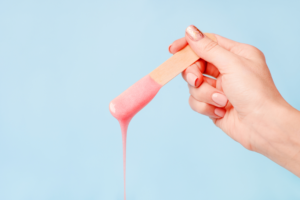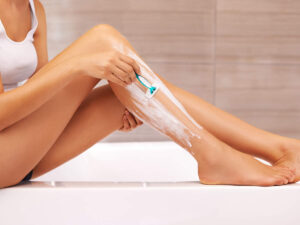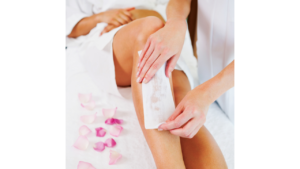
Waxing

Waxing involves removing the strands of your hair from the roots. It may involve the use of soft wax or strong adhesive.
Soft wax uses a warm mixture of resin, oil and other ingredients. This is heated on the heater and applied to your skin with a spatula. The strip is soaked in wet wax and peeled, on the opposite side of your hair growth. The newly developed solid wax is made of resin, oil and beeswax. It is applied to your skin and left to dry on its own without the use of strands.
Shaving
Shaving is an easy way to remove hair. It only removes hair over the top layer of your skin. Required tools include razors and cosmetics such as shaving cream or gel.There are many types of razors available in the market today. This includes safety razors, which are usually discarded and available at your local pharmacy. You also get razors on the edge that usually look like a exposed blade. Electric razors are available online but are less expensive.
Which parts of your body are most effective at shaving or immersing?

The choice of wax or shaving usually depends on the part of the body you wish to shave / shave. Although both methods work equally well, it all goes downhill to make the process easier for yourself, skin sensitivity and pain involved.
Much also goes into personal preferences. Women on the move often turn to the beard, as it takes less time and less controversy. For those looking for long-lasting results, they may choose to brush their arms, legs, armpits and bikini areas.
What Are the Benefits of Shaving Compared to Anointing?
Waxing
- Basic Exfoliation:
Waxing removes dead skin cells, making the skin soft, smooth and radiant.
- Removes Hair from Roots:

The process removes the hair follicles from their roots. Therefore, the hair on your skin will only grow back after a few weeks of appointment.
- Prevents Inflammation:
Prevents inflammation and itching caused by razors. As the waxing exfoliates and removes the top layer of skin, the skin is not irritated.
- Reduce the Risk of Cutting:
Since there is no use of sharp tools, such as blades involved in shaving, there are no cuts in the wax mixture.
- Light skin:
The skin appears light and has not changed. Frequent shaving may darken the skin.
Shaving

- Slow Skin Removal:
This provides a slight exfoliation by removing dead skin cells as you run your razor over your skin. However, it does not act as a wax.
- Painless:
Shaving is usually painless. It is an easy way to remove prominent hair follicles.
3. Quick And Easy:
Shaving does not require you to visit the living room. It can be done even if your hair is very short. You do not have to wait for your hair to grow to a certain length.
- Economics:
It is not as expensive as exaggeration. All you need to do is buy a good razor and some cosmetics.
- Immediate Results:
Shaving does not take long to achieve the final result.
- No Skin Disorders.
Shaving does not make you worry about your skin reacting to the ingredients. However, you may feel itching and irritated skin if you do not apply the cream.
Side Effects-
Waxing
1. Pain:
Since ointment involves the removal of hair from the roots, the procedure can be painful. However, the degree of pain varies from person to person.
- Redness or Irritation:
Locking up may cause redness, irritation, and inflammation to some degree. If you have very sensitive skin or thick hair, this may be a common result of your every program.
- Outbreaks:
You may also see a few rashes or acne. Since exposed hair follicles are often susceptible to bacterial infections, a lack of hygiene measures before and after may leave acne on the skin.
- Incoming Hair Strikes:
Exfoliation removes hair from their roots but sometimes, instead of completely leaking out, the hair may break off and leave part of it behind.
- Temperature Indications:
You may also notice a few signs of burns or skin removal. This can happen if the wax used is too hot or you are using a wax-based product, leading to a reaction.

- Color change:
As the waxing exfoliates the skin, the upper layer may be exposed to sunlight, which leads to lightening of the skin.
Did you know?
Shaving and waxing may cause a decrease in the strength of the stratum corneum (the outer layer of the epidermis) and the protective functions of the skin (1).
Shaving
- Cuts and Scratches:
This is a common result of sharp tools involved in shaving. (2) Although shaving is less painful than wax, cuts can be painful.
- Razor Burning:
This can happen if you shave too fast or do not use lotion. This can lead to darker or darker skin.
3. Darkening the Skin:
Regular shaving may activate melanocytes that contribute to the production of pigment called melanin in the skin. As melanin gives your skin and hair its color, high volume, it can make your skin look darker.
- Skin irritation:
Due to inflammation of the hair follicles, this may be due to wearing clothing that irritates the skin. Blurred or previously used razor may cause swelling (3) and may result in blistering.
- Incoming Hair:
Shaved hair may grow on the skin causing dry hair.
